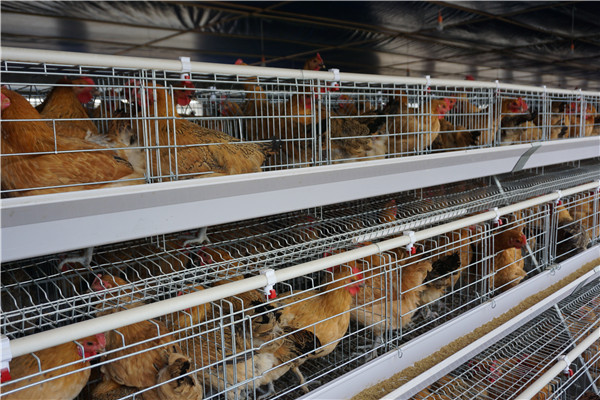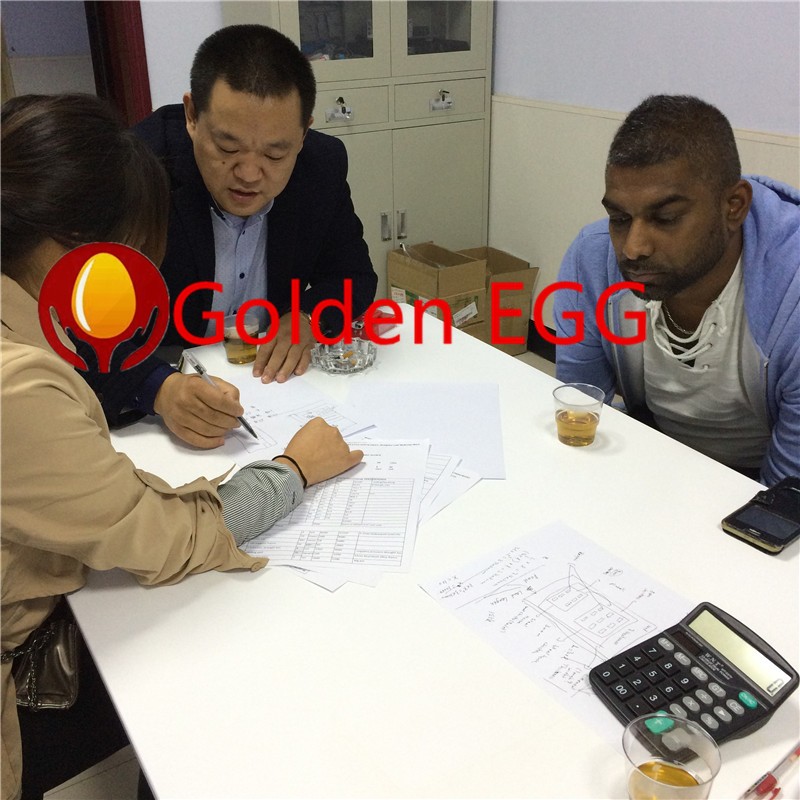Nowadays, more and more chicken farmers prefer to use layered laying hens to raise chickens. Chicken cages have many advantages. Chickens have a smaller range of activities in cages and consume less energy. The chicken that came out was fat and big. The following will explain to you the use of chicken cage chicken characteristics and some knowledge of the structure of the chicken cage. Over the years, with the rapid development of the aquaculture industry and the continuous deepening of scientific and technological content in business management, the scientific and rational use of breeding equipment has brought immeasurable economic benefits to the company. Chicken breeding equipment in the management of pig breeding is even more manifested an irreplaceable role. Establishing a sound biosafety system is another lifeline for large-scale chicken-raising equipment.
In any case, quality is the only choice for companies to survive in the market. The safety and health of breeding pigs should be given top priority in site construction and breeding management. Under the new competitive situation, chicken-raising companies must overcome the technical barriers, occupy the domestic market, and enter the international market. The first thing to do is to solve the safety and health problems of the products produced by the chicken industry. This is a market demand and a historical mission. Large-scale pig production enterprises, as the source of chicken breeding, should pay more attention to product safety and health. When making cage cages, the materials used to make cage cages should be well selected. Because the heavy material is very likely to cause the chickens to be injured or drowned when the cage collapses during the use of cage cages. Therefore, special attention must be paid to the selection of cage cage material. Egg cage size, usually 450 mm high, 400 mm high, 400 mm deep (310-350 mm shallow cage), 120 to 160 mm outside the cage, and 6 to 8 degrees cage bottom gradient Each chicken has an eating width of 100-110 mm. A cage of 2 chickens, cage width 250 mm, 3 chickens - 3,300 mm, 4-5 chicken 420-450 mm. The side and rear walls of the cage are made of wire with a diameter of 2–2.5 mm. The warp is lined on the outside with a coarse wire. The spacing is 100–200 mm. The weft is arranged on the inside with a 30 mm spacing. It prevents chickens from squeezing each other. The bottom of the cage should use 2.5-3mm steel wire, the weft thread is arranged at the bottom, the distance is 50-60mm, and the longitude is arranged on the surface with a thick wire, the pitch is 22-25mm, and the arrangement is arranged so that the chicken can produce The eggs easily roll onto the egg tray. The cage door is 400 mm high and uses a 3 mm steel wire for vertical fences with a 50 to 60 mm spacing. Leave a gap of 45mm between the bottom edge and the bottom of the net to allow the eggs to roll out, and some eggs are added to protect the eggs from the eggs, causing economic loss. The above introduction we learned about chicken cage chicken knowledge. Chicken cage chicken has many advantages, we can not say that there are no shortcomings, but we should make up for the shortcomings.
Front net design: The front net design of layer-type laying hens equipment is generally used: vertical wire and a few horizontal wires. The vertical wire gap is between 4.5 and 6.5 CM. The cage door is usually connected to 2-3 wires, and the U-Net is connected, like inside or outside. There are advantages, 1. The position of the chicken can be arbitrarily changed, and it can accommodate more chickens to eat together. 2. Simple structure, less material used. 3. The installation control is relatively simple and easy to use. 5 can better protect the feathers of chickens. Feces fermentation processing system features: 1, the introduction of South Korea's technology production, industrial advanced traditional fermentation machinery out of the mode, to achieve continuous feeding, continuous discharge. 2. Turning speed is fast and the material can be turned evenly. The processing capacity can be set according to the customer's needs. The maximum processing capacity is up to 150 tons. 3, low operating costs, can effectively improve the working environment of workers. 4. Realize the zero discharge of animal manure and pollutants. Scope of application: Applicable to the fermentation of livestock manure and waste.
The following are some of the knowledge about stacked chicken cages: 1. Using the world's leading wire drawing equipment and drawing wire technology, the surface of the steel wire is smooth, free from lacerations, scratches and other harmful defects. The chicken cage mesh can be effective after molding. Prevention of foot damage to chickens and prevention of the occurrence of Portuguese coccus caused by chicken wire laceration; 2. Introduce fully automatic welding equipment to ensure that each welding spot has the same welding depth to ensure the quality of each product; 3 The thickness of the new galvanized process is 5 times that of conventional galvanizing, and the product life is more than 5 times longer than that of similar products. 4. The 90° vertical angle avoids the arcuate folding angle of the common cage, which can effectively improve the verticality of the cage. , Increase physical elasticity, reduce deformation, with anti-fatigue, long service life characteristics; 5, wide "V" type egg tray design, can increase the egg rolling buffer, reduce the broken egg rate, the user can also add ample funds Automatic egg collection system and automatic feeding system to avoid repeated investment due to equipment replacement, effectively increase your capital usage rate; 6, combined with international general breeding equipment standards, reduce steel Wire diameter, increase wire density, through high density bottom net design, is conducive to reducing the gradient of the bottom of the cage, facilitate the smooth entry of eggs into the egg trough, can effectively reduce the labor burden on chickens, and can increase the egg production rate by more than 5% through experiments. Reduce the rate of dead scouring more than 50%, and can effectively reduce the incidence of various types of poultry diseases. We generally divided chicken cages into broiler cages, broiler cages, laying hen cages, and mixed-breeding broiler cages and single-feed broiler cages. Broilers have fast growth and short feeding cycles. Broiler cages are more difficult in solving chicken breast disease, running chickens and chickens. Currently, the technology for producing chicken nets has not been fundamentally solved. Most products can only be used. For the rearing of broilers, the raising of broilers needs to be maintained. The mesh structure and parameters of broiler cages produced in China are roughly similar to those of broiler cages. Single-feed breeder cages Breeding hens and breeding cocks in single cages, but the male and female breeding cages are mounted on the same cage. Individual breeding cages can be artificially inseminated, and the proportion of hens and cocks can be increased to 13:1. , and the count is reliable, easy to access to each breeder, so it is more suitable for the original breeder farm.
laying hens and broilers are a popular form of broiler breeding at home and abroad. The reason is because the design of laying hen cages provides a comfortable environment for chickens, so that chickens can play a better role in the breeding process. The main advantages of the design of laying hen cages are in the front net and caged doors, the density of cage feeding, and the angle of escaping from these aspects further embody the interests of chickens.
























